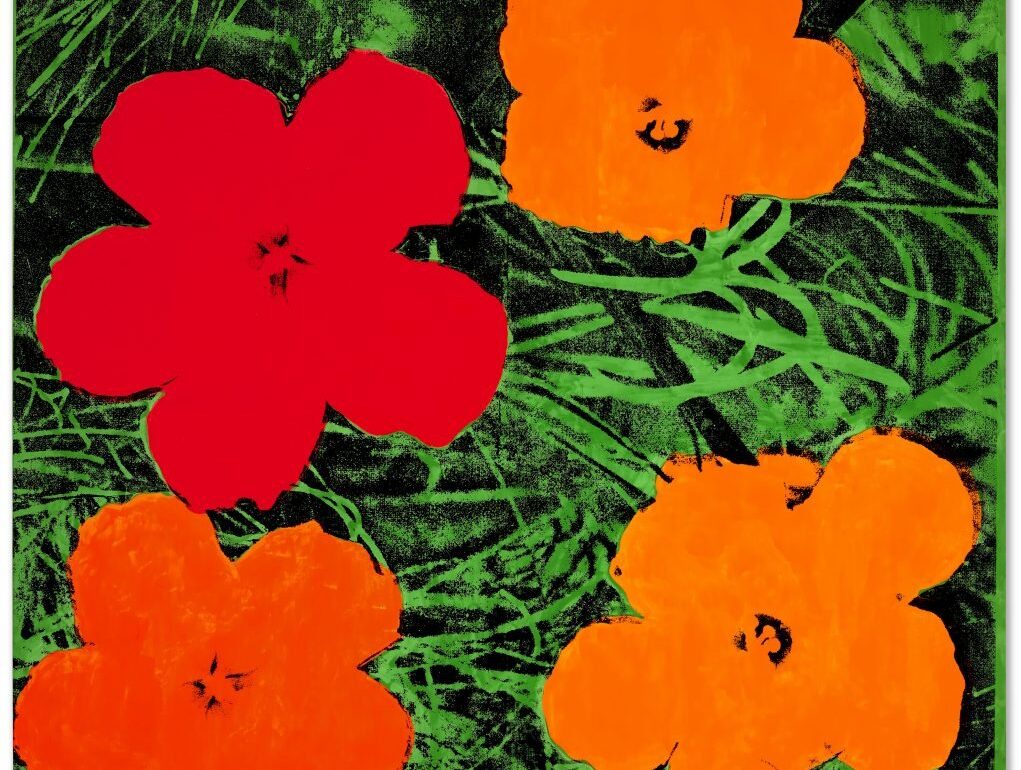On Thursday night in New York, Christie’s hauled in $413.3 million at its evening sale of 20th-century art, with a sprawling Andy Warhol painting of red and orange flowers leading the way.
It was the final evening auction of a week of modern and contemporary art sales in the city—and the largest. The night before, Sotheby’s modern art sale totaled $235 million.
Christie’s result fell squarely within its presale estimates of $345.9 million and $501.7 million. Last May, the house brought in $328.8 million at its evening sale of 20th-century art, and another $178 million the same night with work from the collection of S.I. Newhouse, for a $506.8 million total.
Of the 64 lots on offer on Thursday at Christie’s Rockefeller Center headquarters, three were withdrawn and three failed to sell, for a sell-through rate of 91 percent (or 95 percent, setting aside the withdrawals). The house’s executives seemed visibly relieved by the result, which came after a harrowing week. Last Thursday, the firm’s website was rendered inoperable in a hack; it remains offline.
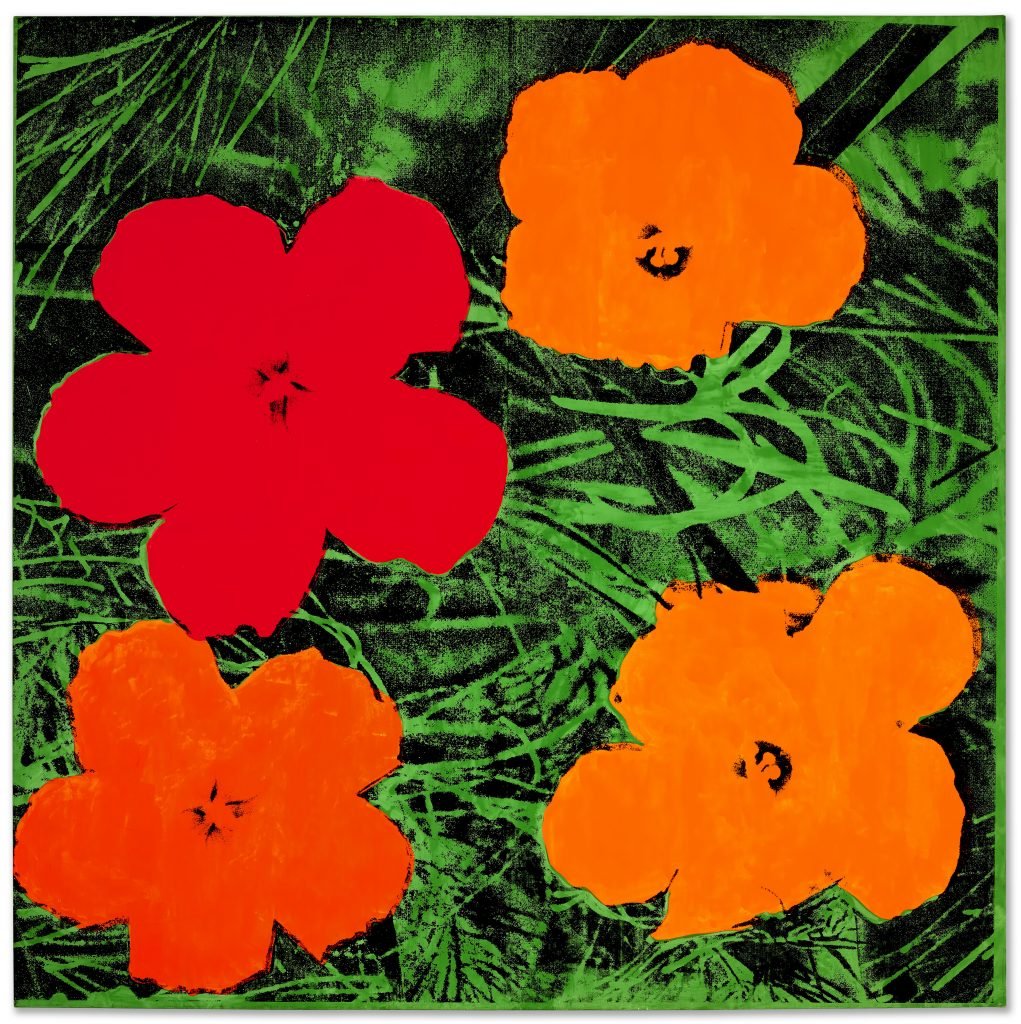
Andy Warhol’s Flowers (1964), which sold for $35.5 million. Photo courtesy Christie’s.
The 1964 Warhol Flowers, saturated with seductive colors and nearly seven feet on each side, was estimated at $20 million to $30 million and backed by a third-party guarantee, ensuring it would sell. Bidding took a while to get going, and at first it looked like Alex Rotter, chairman of Christie’s 20/21 Art Departments, would win it for a client at around $15 million.
However, two hopefuls jumped in to vie for the piece, and bids started flying in $500,000 increments. The hammer fell at $30.5 million, with Rotter’s client prevailing over the competition. The final price, including fees, was $35.5 million.
“For a flower painting to achieve $35 million is unheard of, in any market,” said Rotter, who brought in the consignment after chasing it for 15 years.
But the Warhol was something of an exception on a night that was otherwise efficient but lackluster, with few bidding wars. Most lots fell short of their low presale estimates, and many went on a single bid, without the depth of competition that Sotheby’s had. The house added 12 third-party guarantees at the last minute, and many of those works sold to their backers on a lone bid. Unlike at Sotheby’s, bidding from Asia was minimal, advisor Patti Wong said.
“If people are reasonable, things will sell,” Manhattan dealer Edward Tyler Nahem said. “Sellers need to lower their expectations. They shouldn’t be based on a year ago or five years ago.”
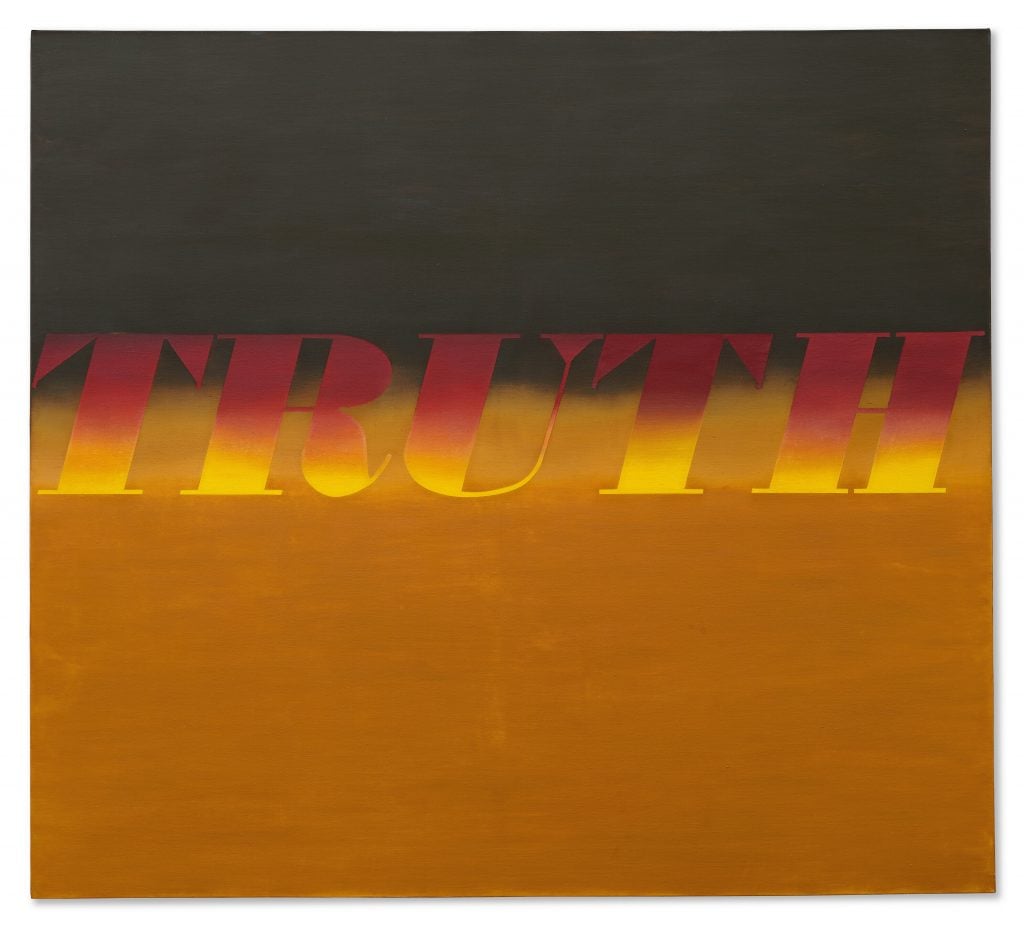
Ed Ruscha’s Truth (1973), which sold from the collection of Norman and Lyn Lear for $12.5 million. Photo courtesy Christie’s.
There were bargains to be had. A 1952 box by Joseph Cornell, Untitled (Medici Prince Variant), estimated at $700,000 to $1 million, initially failed to reach its reserve and passed. It was offered again at the end of the auction, hammering for $350,000—$403,200 with fees.
Earlier in the sale, an Alberto Giacometti sculpture, Femme Leoni (1947), hammered at $19 million, just short of its presale estimate of $20 million to $30 million. (With fees, the total was $22.3 million.) Only one person raised a paddle, presumably its third-party guarantor. If the work looked familiar to some, that’s because the slender bronze appeared at Sotheby’s in 2020, in a sale of businessman Ron Perelman’s art trove. Then, the 1958 work fetched $25.9 million. Its anonymous buyer was Japanese collector Yusaku Maezawa, according to people familiar with the matter. Maezawa took a loss tonight.
Another example of adjusted expectations came in the form of a verdant garden scene by Vincent van Gogh, Coin de jardin avec papillons (1887). Exhibited extensively in Europe, the United States, and Japan, the painting failed to sell at a 2018 auction for about $40 million. Six years later, it was carrying a $28 million-to-$35 million estimate. Guaranteed and backed by an irrevocable bid, the painting hammered at $28.5 million ($33.2 million with fees) to a client of Rotter.
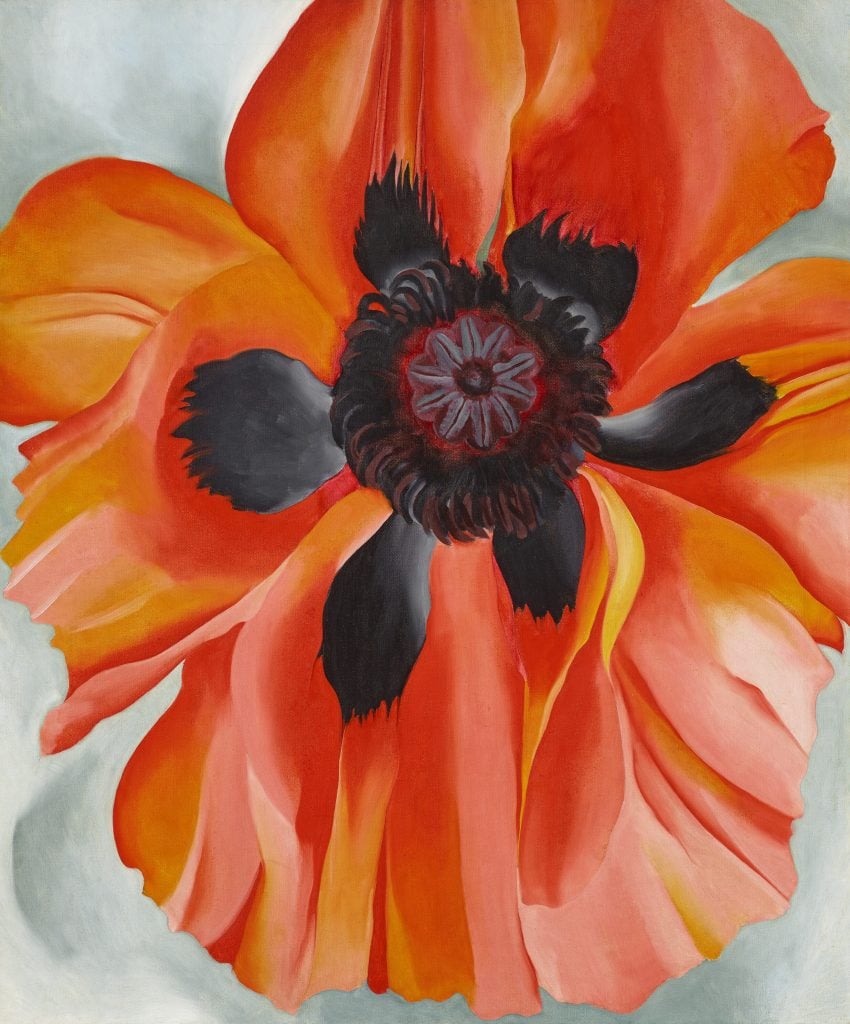
Georgia O’Keeffe’s Red Poppy (1928) sold for $16.5 million.
Georgia O’Keeffe’s fiery Red Poppy (1928) fetched $16.5 million, exceeding its presale estimates of $10 million to $15 million. It is one of only six oil paintings that O’Keeffe made of the subject. (One of them made it onto U.S. postage stamps in 1996, Christie’s noted.)
The night’s casualties included Joan Mitchell’s Crow Hill (1978), a dense abstraction with inky blue brushstrokes estimated at $7 million to $10 million. It was the sixth major Mitchell painting on the block this week. Perhaps the market reached its saturation point.
The auction included six lots from the collection of Norman and Lyn Lear. Norman Lear, a legendary Hollywood screenwriter and producer, died last year at the age of 101. Two paintings from the group were in the sale’s top-ten results: David Hockney’s A Lawn Being Sprinkled (1967), which went for $28.6 million, and Ed Ruscha’s Truth (1973), for $12.5 million—a strong result for a 1970s painting, Rotter said.
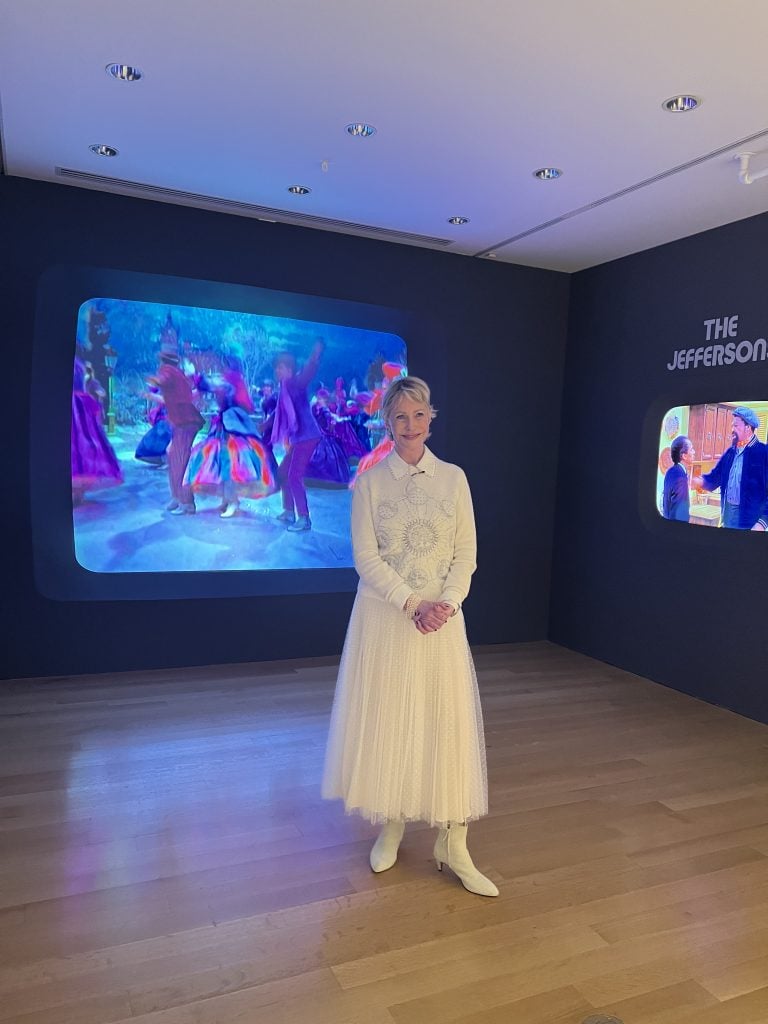
Lyn Lear at Christie’s, which is selling the collection she assembled with her late husband, Norman Lear, a legendary writer and producer. Photo by Katya Kazakina.
Lyn Lear left the building with an entourage of friends. Passing by the pictures that once hung in the home she shared with her late husband, she stopped in her tracks and blew them a kiss. “Goodbye, my beloveds,” she said.
Follow Artnet News on Facebook:
Want to stay ahead of the art world? Subscribe to our newsletter to get the breaking news, eye-opening interviews, and incisive critical takes that drive the conversation forward.
This post was originally published on this site be sure to check out more of their content



